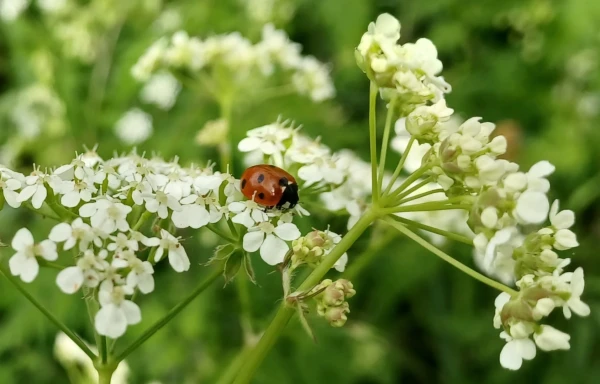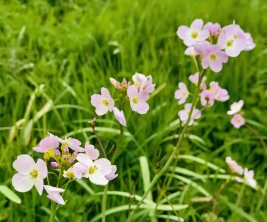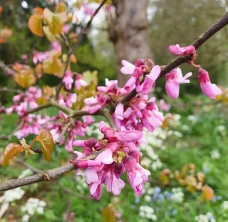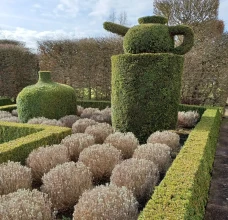Garden Blog - May '24
The famous ‘Peasant Poet of Northamptonshire’, John Clare, in his set of lively pastoral poems titled ‘The Shepherd’s Calendar’, published in 1824, begins his offering for May thus:
“Come, Queen of Months! in company
With all thy merry minstrelsy!”
Minstrelsy indeed! With its joyful and playful outbursts of floral colour and avian song, May is the most entertaining of months, ushering out spring and introducing summer.
In our Wild Gardens, a mass of Queen Anne’s lace, bird cherry, hawthorn, and horse chestnut, are all blessed with voluminous clouds of frothy, pure white flowers, filling the air with their deep and heady scent. And as dusk falls, the whole ensemble takes on strange and ghostly feel.
Queen Anne’s lace, known in these parts as keck, has some interesting folklore attached to it. In some circles it’s known as ‘mother die’, a name used to frighten children into believing that picking the flowers would result in the death of their mother. Of course, it led to no such thing. This overly dramatic moniker was intended to deter children from picking poisonous hemlock by mistake, and possibly ending up dead themselves.
Our wildflower orchard is really coming into its own right now, with masses of apple, pear, cherry, and quince blossom, above cowslips, primroses, red campion, and cuckoo flower, among others. As the seasons move on, so will the floral display, providing food and shelter for a host of pollinating insects, and other critters.
Meanwhile there’s also change for the seasonal displays in our pots, tubs, and urns, in May too. Out goes the winter display to be replaced by summer. Mature perennials such as our brugmansias, cannas, and Ethiopian black banana, have returned nicely into growth over the last few months and are now big enough to make an impact outdoors again as specimen plants in our larger displays. Cuttings taken towards the end of last year, such as fuchsias, salvias, and heliotrope, are now mature enough to join them. Also set to liven up the summer displays are half-hardy annuals grown from seed, most prominent among these are numerous varieties of love-lies-bleeding, in a range of colours and forms.
It’s important to ensure that plants grown under cover are hardy enough to survive happily outdoors at this time of year, before planting them out. This is done by ‘hardening off’ or placing plants outdoors in a sheltered position for a few days before planting to toughen them up a little. It’s essential, however, that these plants are protected from frost. Therefore, if frost is forecast, it’s advisable to put off planting out till a later date.
Among the permanent, hardy plants, in our collection, a most beautiful and extraordinary specimen is the Judas tree. Originating form the Mediterranean Basin, the Judas tree, or Cercis siliquastrum, as it’s known to the botanically minded, is unusual in that its deep pink flowers erupt directly from older growth, including the trunk, in spring, shortly before its leaves appear. The flowers are edible, and their shape is typical of the pea family, of which the Judas tree is a member.
Folklore would have us believe that Judas hanged himself from a Judas tree. However, this belief most likely arises from confusion around an alternative French name, arbor Judae, meaning’ tree of Judea’, on account of its widespread cultivation around Jerusalem in times past.
Finally, and very importantly for us at Deene Park, the month of May plays host to ‘World Topiary Day’. The fine art of topiary, finds professional gardeners and keen amateurs alike, who may or may not have a slightly bonkers obsession, indulge themselves in their quest to bend the will of Mother Nature by clipping and trimming trees and shrubs into geometric shapes or whimsical forms. This year, ‘World Topiary Day’ falls on a Sunday 12th May, meaning that visitors to our gardens can marvel at the large topiary teapots on our Parterre, and geometrically clipped box and hornbeam of the Rose Garden, all of which have been conjured up within the last twenty years or so, by our current Head Gardener.
Until next month, happy gardening.





